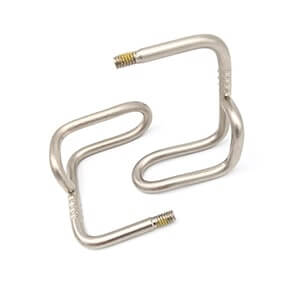Get unique, complex parts easily. No matter your requirements, Chaoyi Spring creates hard-to-produce coil springs and wire forms.
Let us help you create the custom wire form you need, from S-hooks and J-hooks to utility hooks and more.
We work closely with customers across a wide range of industries, helping them design and manufacture made-to-order parts.
Why choose Chaoyi Spring? We prioritize customer-focused collaboration, modern equipment and the latest technology to make your parts per print.
Find the information and guidance you need, from measuring a spring to learning about materials, placing an order and much more.
Compression springs, essential components in numerous mechanical systems, provide resistance to compression forces, enabling smooth operation and safeguarding against excessive strain. A 3/4 diameter compression spring, as the name suggests,


Compression springs, essential components in numerous mechanical systems, provide resistance to compression forces, enabling smooth operation and safeguarding against excessive strain. A 3/4 diameter compression spring, as the name suggests, boasts a wire diameter of 3/4 inch, offering a robust and reliable solution for a wide range of applications. This article delves into the intricacies of 3/4 diameter compression springs, exploring their key features, materials, design considerations, and applications.

At the heart of every compression spring lies its wire diameter, a crucial parameter influencing its strength and performance. A 3/4 diameter compression spring, as its name implies, showcases a wire diameter of 3/4 inch. This diameter signifies a substantial spring, capable of withstanding significant compressive forces. While a robust solution, it's vital to recognize the inherent trade-offs associated with larger diameters, which may impact spring flexibility and necessitate more space for installation.
Beyond the wire diameter, several other factors define the characteristics of a compression spring, each playing a vital role in its overall functionality. These factors include:
The design of a 3/4 diameter compression spring necessitates careful consideration of several factors to ensure its optimal performance and longevity. These considerations include:
3/4 diameter compression springs find diverse applications across various industries, driven by their robustness and reliability. Some of the key areas where they excel include:
The substantial diameter of these springs brings forth several advantages, making them a preferred choice in numerous applications:
3/4 diameter compression springs, with their significant diameter, offer a robust and reliable solution for a multitude of applications demanding strength, durability, and consistency. From automotive systems to industrial machinery and medical devices, these springs excel in handling heavy loads, resisting fatigue, and providing stable performance. Understanding their design parameters, materials, and applications empowers engineers to effectively integrate them into their projects, ensuring the seamless operation and longevity of their mechanical systems.
By carefully considering the design considerations, material choices, and applications of 3/4 diameter compression springs, engineers can harness their power and reliability to create innovative and robust mechanical systems. As a testament to their versatility and strength, these springs play a crucial role in driving innovation across industries, ensuring the smooth and dependable operation of various mechanical systems.
Browse some of the custom wire forms and springs that we manufacture. Don’t see what you need? We specialize in made-to-order products that meet your application requirements.
Visit Our GalleryNeed a custom wire form or coil spring? We make it work. Fill out the contact form and a representative will respond within 1 business day. If you have a PDF or CAD file, you can submit to request a quote.